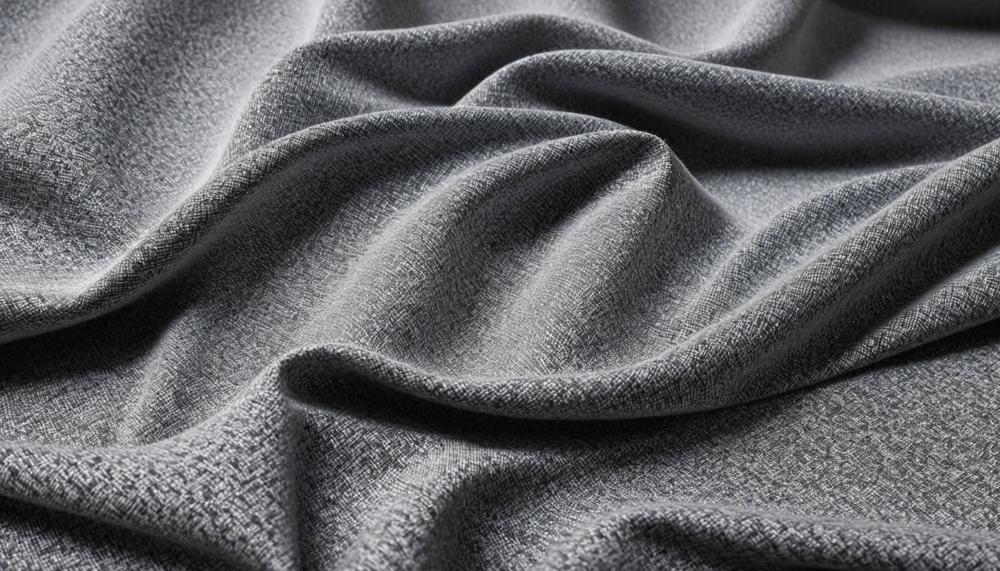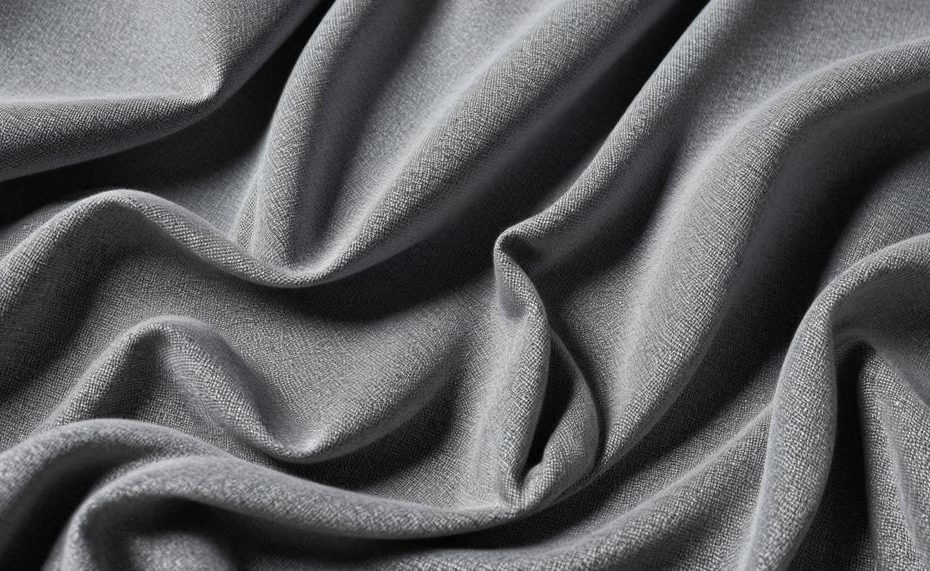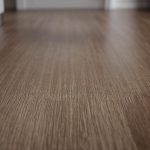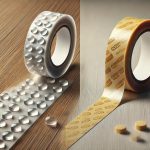The short answer is no, it’s not the best option. While normal glue, such as school or craft glue, is made from polyvinyl acetate and can bond a variety of materials, it lacks the strength and flexibility needed for fabric projects. This can result in weak bonds that don’t hold up well over time, especially with fabrics that experience movement and stress.
Why does this matter? Choosing the right adhesive is crucial for the success of your fabric projects, whether you’re repairing a beloved item of clothing or creating a craft masterpiece. Using the wrong type of glue can lead to frustration, wasted materials, and a finished product that doesn’t meet your expectations.
Key Takeaways:
- Normal glue is water-soluble and dries clear but isn’t strong or flexible enough for fabrics.
- Fabric-specific adhesives or solvent-based glues are recommended for better results.
- To make normal glue more effective on fabric, ensure the fabric is clean and dry, apply a thin layer, and allow it to dry completely.
- Normal glue can potentially damage or discolor fabric and isn’t suitable for items that will be exposed to moisture or heat.
- Alternatives include fabric glue, fusible webbing, double-sided tape, and spray adhesives.
- Consider the fabric type, color, texture, and desired bond durability when choosing an adhesive.
This question is more than a matter of curiosity; it’s about ensuring your projects are durable and look great. Read on to discover why fabric-specific adhesives are your best bet and how to use them effectively.
Table of Contents
What is Normal Glue?
Normal glue, often referred to as white glue or school glue, is primarily made from polyvinyl acetate (PVA). It’s a versatile, water-soluble adhesive that dries clear and is commonly used for bonding paper, wood, and lightweight materials. However, its application on fabrics poses significant limitations due to its lack of flexibility and durability when compared to fabric-specific adhesives.
Differences Between Normal Glue and Fabric Adhesives:
| Aspect | Normal Glue (PVA) | Fabric Glue |
| Composition | Made from polyvinyl acetate (PVA). | Contains synthetic materials specifically designed for fabrics. |
| Flexibility | Not flexible; tends to become brittle when dry. | Flexible; remains pliable and can move with the fabric. |
| Bond Strength | Moderate bond strength, insufficient for heavy fabrics. | Strong bond, suitable for both lightweight and heavy fabrics. |
| Drying Time | Dries clear but can take several hours. | Quick drying, often within minutes to an hour. |
| Washability | Water-soluble, hence not washable. | Varies; available in washable and non-washable types. |
| Application | Suitable for paper, wood, and light crafts. | Ideal for hemming, repairing tears, and no-sew projects. |
| Heat and Moisture Resistance | Cannot withstand heat or moisture well. | Designed to withstand washing and outdoor conditions. |
Why Fabric Glue Is Superior for Fabric Projects:
- Flexibility: Fabric glue remains flexible after drying, ensuring the bond doesn’t crack or peel with movement. This is crucial for clothing and upholstery.
- Durability: It provides a strong, durable bond that can withstand wear and washing, unlike normal glue which can break down when exposed to moisture.
- Ease of Use: Fabric glue is designed for ease of use on textiles, often coming in easy-apply formats and quick-drying formulas.
- Specialized Formulas: Different types of fabric glue are available for specific needs, such as washable glues for garments or stronger adhesives for heavier fabrics.
Advantages of Using Normal Glue
When considering normal glue for fabric projects, several advantages make it a viable option, especially for quick fixes or temporary solutions. Here are the key benefits:
| Benefit | Explanation | Use Case |
| Accessible and Convenient | Normal glue is widely available at most stores, making it easy to obtain without a special trip. | Perfect for emergency repairs when specialized glue isn’t at hand. |
| Dries Clear | It dries clear, making it suitable for light-colored or sheer fabrics where visibility of glue could be an issue. | Ideal for projects requiring an invisible bond. |
| Versatile | Can be used on a variety of fabrics including cotton, polyester, and silk. | Useful for multi-fabric projects where a single adhesive type is preferable. |
| Washable for Temporary Fixes | Can be washed out of fabrics, allowing for temporary fixes or adjustments without permanent commitment. | Good for provisional garment alterations or costume adjustments. |
| Cost-Effective | Generally cheaper than specialized fabric glues. | Beneficial for budget-conscious projects or bulk applications. |
| Reinforces Sewing | Can be used in combination with sewing to reinforce the hold. | Enhances the durability of hand-sewn seams. |
Disadvantages of Using Normal Glue
The short answer is normal glue has several potential drawbacks when used to stick fabric. Here are the main disadvantages:
Potential Drawbacks of Using Normal Glue on Fabric
| Weak Bond Strength | Normal glue typically doesn’t provide a strong enough bond for fabrics, especially for heavy or stretchy materials. Over time, the glue may lose its grip, causing the fabric to come apart. |
| Lack of Flexibility | Normal glue dries hard and inflexible, which is unsuitable for fabrics that need to move and stretch. This can result in the glue cracking and the bond breaking when the fabric is manipulated. |
| Damage and Discoloration | Some fabrics, like silk or wool, are particularly sensitive to normal glue, which can cause discoloration or even damage the fibers. The chemicals in the glue may react with the fabric, leading to unsightly stains. |
| Messy Residue | Normal glue can leave a sticky residue that is difficult to remove. This residue can attract dirt and make the fabric look unclean. Additionally, it can seep through thin fabrics, leaving visible marks. |
| Washability Issues | Normal glue is not designed to withstand washing. It can dissolve or weaken when exposed to water, leading to the fabric pieces detaching. This makes it unsuitable for items that will be laundered regularly. |
| Temporary Fix | While normal glue might work for temporary fixes, it is not reliable for long-term use. The bond tends to degrade over time, especially under stress or repeated use. |
Alternatives to Normal Glue
When it comes to fabric, there are several adhesive options beyond normal glue that provide stronger, more durable, and flexible bonds. Here are some effective alternatives:
| Adhesive Type | Description | Usage |
| Fusible Webbing | A type of fabric with adhesive on both sides that melts with heat. | Ideal for hemming, bonding fabrics together permanently without sewing. |
| Double-Sided Tape | A pressure-sensitive tape with adhesive on both sides. | Useful for quick fixes, attaching trims, and temporary holds. |
| Spray Adhesives | Aerosol adhesives that spray a fine mist of glue. | Great for large surface bonding, attaching fabrics to other materials like wood or metal. |
| Hot Glue | Glue sticks melted in a hot glue gun. | Effective for attaching heavier embellishments and quick repairs. |
| Fabric Glue | Specially formulated glue designed for use on fabrics. | Best for flexible, durable, and washable bonds. |
Tips for Improving the Effectiveness of Normal Glue
To make sure normal glue is effective for sticking fabric, follow these detailed tips:
Prepare the Fabric
Ensure the fabric is clean and dry. Remove any dust, dirt, or oils as they can interfere with the glue’s adherence. Use a lint roller or a gentle wash to clean the fabric.
Apply the Glue Thinly and Evenly
Use a brush or an applicator to spread a thin, even layer of glue. A thick layer can seep through the fabric, causing stiffness and uneven bonding.
Test on a Small Area First
Some fabrics like silk or wool might react negatively to normal glue, causing discoloration or damage. Always test the glue on a small, inconspicuous area first to check for any adverse reactions.
Allow Sufficient Drying Time
After applying the glue, let it dry completely before handling the fabric. This might take several hours or overnight. Placing a heavy object on top can help ensure a stronger bond.
Combine with Other Techniques
For added strength, use normal glue in conjunction with stitching or hemming. This reinforces the bond and provides extra durability.
Protect from Moisture and Heat
Normal glue is water-soluble and not heat-resistant. Keep the glued fabric away from moisture and avoid exposing it to high temperatures to prevent the bond from weakening.

Considerations When Using Normal Glue on Certain Fabrics
Using normal glue on certain types of fabric can result in several potential risks and undesirable consequences. Here are the key issues to consider:
Fabric Damage
Normal glue can cause damage to delicate fabrics such as silk, satin, and lace. These materials might become stiff, discoloured, or even tear when glued.
Permanent Stains
Many glues are not designed to be transparent when dry. As a result, they can leave unsightly stains or residues on fabrics, which are difficult or impossible to remove.
Adhesive Failure
Some fabrics, especially synthetic ones like polyester or nylon, may not bond well with normal glue. The adhesive may not hold, leading to failed projects or garments that come apart.
Flexibility Issues
Fabrics need to maintain their flexibility and softness. Normal glue can harden and make the fabric rigid, affecting the drape and comfort of the garment or item.
Washing and Durability Problems
Normal glue often cannot withstand washing. When exposed to water or detergent, the glue might dissolve or lose its adhesive properties, causing the fabric to come apart.
Chemical Reactions
Certain glues contain chemicals that can react with the dyes or fibres in the fabric, leading to discolouration, weakening of fibres, or unpleasant odours.
Conclusion
In conclusion, while it may seem convenient to use normal glue for fabric projects, it is not the best option.
Normal glue lacks the strength and flexibility needed for fabrics, leading to weak bonds that may not hold up over time. This can result in frustration and a finished product that does not meet your expectations.
It is crucial to choose the right adhesive for your fabric projects, whether you are repairing clothing or creating a craft masterpiece. Consider the type of fabric, desired bond durability, and potential damage or discoloration when selecting an adhesive.
Alternatives such as fabric glue or fusible webbing are recommended for better results.






